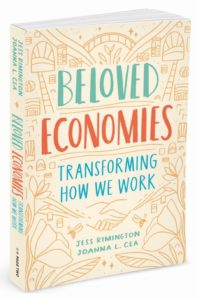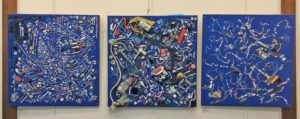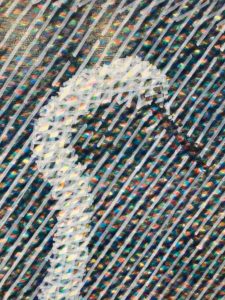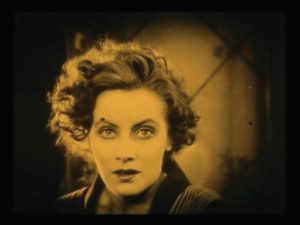Not Just Business as Usual
If work isn’t working for you — or you wonder why so many live paycheck to paycheck while billionaires extract ever more wealth from the system — Jess Rimington and Joanna L. Cea offer some possible answers in their book Beloved Economies: Transforming How We Work. They will discuss it at Wellfleet Preservation Hall at 6 p.m. on Tuesday, Nov. 15.

Rimington grew up in Brewster and Cotuit and attended Cape Cod Lighthouse Charter School. She says the book was inspired by Cape culture. “There’s something about the seasonal community, the artists, the avant-garde way of doing things differently,” she says. “And the pandemic has taught us we can shift. Rules can change. We can imagine new ways to solve housing and workforce challenges. If we look at problems with a beginner’s mind, we can create a healthier economy and community in which the younger generations can have a thriving future on the Cape.”

As visiting scholars at Stanford University’s Global Projects Center in 2015, Rimington and Cea began working on what they thought would be a six-month project. It turned into seven years of research on practices that allow companies and organizations to thrive without following an extractive capitalist model.
At their Preservation Hall event, Rimington and Cea will discuss practices that they identified as helping create environments that “audaciously prioritize well-being, meaning, connection, and resilience — alongside conventional metrics like financial success.”
Rimington hopes the experience will leave participants with “a sense of nourishment and the possibility of living in a beloved economy rooted in joy and inspiration and learning.” Tickets are $15. See wellfleetpreservationhall.org and belovedeconomies.org for more information. —Kate Wallace Rogers
Transforming Trash Into Art
There’s a lot of trash in the Wellfleet Public Library this month. Luckily, it’s arranged neatly.

Chatham artist Suzanna Nickerson has created dozens of panels to which she painstakingly affixed hundreds of pieces of trash collected on local beaches. Each piece is accompanied by the name of the beach where the trash was collected, the date of collection, and the duration of the artist’s walk.
The pieces are oddly unsettling. There’s a sheer visual pleasure in the profusion of objects and the patterns they create — followed by the sinking feeling one experiences when faced with the environmental threat they represent. It’s art as activism, done so seductively that you can’t look away.
The exhibition runs through Dec. 2. There will be an opening reception on Saturday, Nov. 12 from 3:30 to 5 p.m. See wellfleetlibrary.org/events for more information. —Abraham Storer
Michael Zachary’s Illusions of Nature
At first glance, Michael Zachary’s paintings seem to brim with color. A closer look, however, shows there are only four: cyan, magenta, yellow, and black (the colors used in nearly all commercial color printing). His work is on view at Room 68 (377 Commercial St., Provincetown) through the end of November.

Zachary says his art involves an illusion that tricks the viewer into seeing a whole gamut of colors. “Most of the colors you see in my work don’t actually exist on the surface,” he says. “They are simply complicated perceptual illusions that occur as a result of the interactions between those four base colors.”
The process begins with intense observation of the natural world, which Zachary then distills into colors and layers of lines. While it may seem contradictory to use a method that is so logical and mathematical, Zachary sees it complementing the fluidity of the natural world.
“Nature is this glorious Rorschach test, a projection of our own desires bubbling to the surface,” says Zachary. He likes to think of his paintings in the same way. His work forces the viewer to be an active participant in completing the image. “The art changes based on your position,” he says. At a distance, the image of an egret or a coastal horizon is photorealistic. But when the viewer looks closely, its meaning is lost to the fractured nature of Zachary’s method.

Zachary usually begins with multiple photographs that he collages into a composition using Photoshop. He then sketches the image using crosshatching, which he breaks down into layers of lines. The rest is a “slow, meditative, and painstaking” process that arrives at a final image that Zachary says is “like pushing up against a horizon.
“I think there is something beautiful about taking a method that you know is never going to perfectly capture what is there and pushing it into new territory,” Zachary says. “You are never going to capture the full complexity of the world.” —Sam Pollak
Sharing a Lifetime of Collecting Film
“I’ve been collecting film ever since I was a kid,” says Brad Moore. His personal collection numbers between 100 and 200 films, he says. Moore organizes a film series that runs on Thursdays from October through March at the WOMR studio at 494 Commercial St. in Provincetown.

The films in his current series run the gamut. Dracula Prince of Darkness, a 16mm film from 1966 which screened close to Halloween this year, “obviously had faded color,” he says. The faux blood was strawberry-vibrant. Still, the audience was enthralled. The shrieks and gore of the retro vampiric horror picture were punctuated by yelps of “Stop!” and “No!” from viewers gathered in WOMR’s central space. In a very different register next week, Moore will screen G.W. Pabst’s The Joyless Street, a 1925 silent film that marked Greta Garbo’s second starring role.
Most of the films in Moore’s collection are on Super 8 film. When a silent picture is screened, WOMR’s Mary Martin often accompanies on the piano. She improvises as she watches the film and describes her experience with extemporaneous musical accompaniment as being “like a medium.” (She also says she tends to be exhausted the next day.)
Moore was inspired to start the series 10 or 15 years ago when WOMR moved to its current building. “I saw that I could show films here and make some money for the radio station,” he says. The screenings are free, though the audience is encouraged to donate. —Sophie Mann-Shafir



